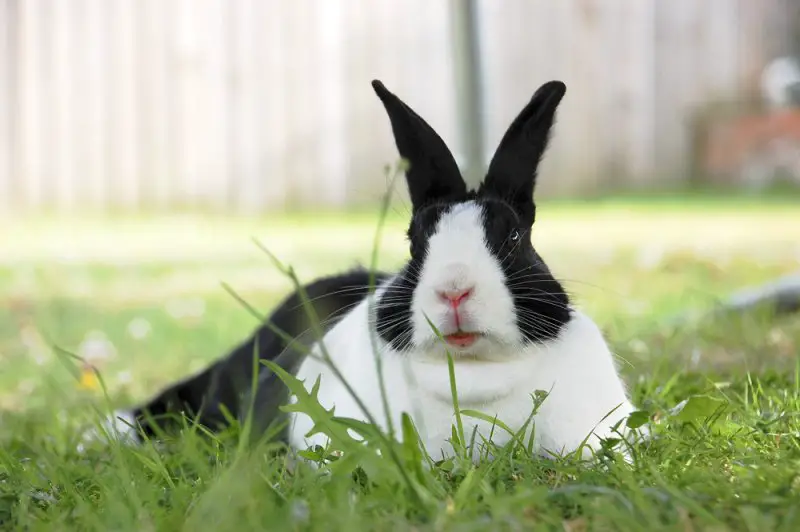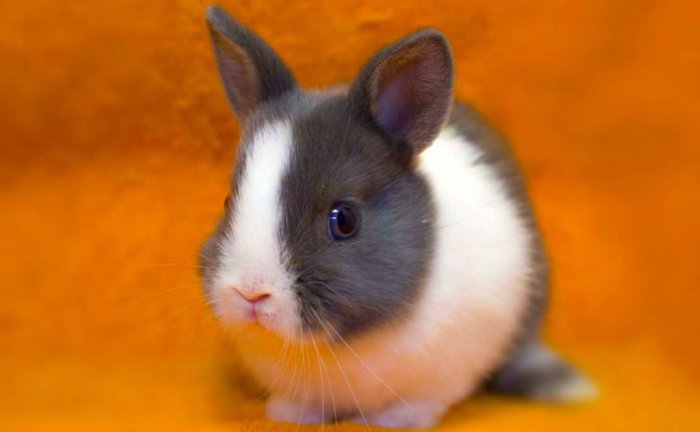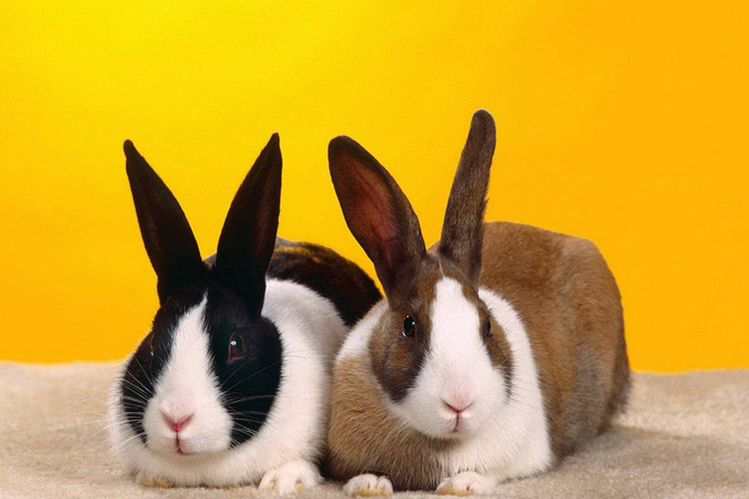Today, one of the ten most popular breeds in Europe are Dutch decorative rabbits. These handsome men are bred mainly because of their unusual appearance. This fluffy creature in “mask and pants” serves as a real decoration of the yard or apartment.
Description of the breed
At first, the breed belonged to meat and skin, and the average weight of individuals reached 5 kg. But with the advent of broiler breeds, the “Dutch”, due to their appearance, moved into the category of decorative and acquired a more miniature size. The unusual exterior of the rabbit and its peaceful nature made it a desirable pet for many households.
Breeding history
In 1800, when Danish rabbits were bred, a mutation occurred in their genes. Individuals appeared, which were called Polish and crossed with wild rabbits. During the war, breeding work ceased, and after its end, in 1947, individuals were exhibited at an exhibition in Amsterdam, which was called Dutch decorative rabbits.
External features
These animals have the following characteristics:
- strong and compact body constitution;
- strong and large (compared to the front) hind legs;
- the weight ranges from 1.3–1.7 kg, but there are individuals reaching 3 kg;
- a characteristic feature is the color of the coat: their body seems to be divided into two parts – a dark back (up to 22 shades) and front, white;
- there may be tricolor individuals, but under the condition of a cross combination (above a red cheek – a black ear, and over a black-red);
- the wool is thick and soft, has an average length, is used for sewing fur coats, vests, finishing fur products;
- the head is small, rounded with a flattened muzzle;
- the neck is not pronounced; ears are short and erect, well pubescent;
- chubby cheeks;
- in addition to color, also unusual eye color: from brown to gray with blue;
- life expectancy is 7 to 10 years.
Character
Dutch rabbits have an easygoing and calm disposition, love to communicate, and show curiosity. They are distinguished by the presence of intelligence and amenable to training. Like all relatives, they are shy.
Fuzzies do not show signs of aggression, but in a stressful situation, they can show their teeth. These are very active creatures, but still, it should be remembered that this is not a toy, but a living being, and you need to behave with it accordingly.
Care and Maintenance
Having made the decision to get eared, it should be understood that it will require attention and care. First of all, you need to take care of the acquisition of the cell and its contents.
The rabbit’s dwelling must meet the following requirements:
- the cage should be spacious, 4 times larger than the pet itself, so the size of the dwelling should not be less than 70 × 50 cm;
- since rabbits do not like heat and tolerate cold more easily, for this reason, direct sunlight should not fall on the cage, so as not to cause overheating;
- the cage should not be in a draft;
- sawdust, hay, or straw are used as bedding;
- the drinker must be well fixed on the side grate so that the pet does not spill water;
- it is better to pick up heavy feeders so that they cannot be overturned or fixed like drinkers;
- the cage should also have a toilet and resting area.
To keep your pet healthy, you need to clean it regularly in its cage. In addition to the daily “cosmetic” cleaning (throwing away food residues, changing the bedding, and adding freshwater), you need to carry out a general cleaning at least once a week:
- After replanting your rabbit in a safe place, discard bedding and food debris.
- Use a stiff-bristled brush for cleaning, and a toothbrush for hard-to-reach areas.
- Wash the cage with warm water and plain soap or a vinegar solution (1 part vinegar to 1 part water). In the end, everything must be rinsed well with water.
- When the cage is dry, fold everything back and cover it with fresh bedding. Leave a small area uncleaned each time, as rabbits mark their home and, not smelling, will worry.
It is better not to use chemicals for cleaning, because they, remaining on the cage and its contents, can cause diseases in animals.
Preventive vaccinations
To maintain the health of eared pets, they need to carry out preventive vaccinations. This will not give a 100% guarantee, but it will reduce the possibility of illness.
Vaccination is carried out in the following frequency:
- the first vaccination against myxomatosis and hemorrhagic disease is carried out at the age of 45 days with a weight of 0.5 kg (if the weight is less, the vaccination is done later);
- re-inoculated with the same vaccine at 4.5 months and then every six months;
- rabies is vaccinated at the age of 2–2.5 months;
- to prevent a decrease in immunity, it is advisable to do helminth prophylaxis before each vaccination.
Feeding rules
Although Dutch rabbits are not picky about their diet, they can prolong their life with a properly formulated diet.
The animal menu must include:
- dry mixes (compound feed) containing all the necessary vitamins and minerals;
- barley, oats, and corn;
- dried grass (200-300 g per day): it improves the movement of food through the intestines and removes blockages from hairballs that enter the intestines when the animal licks itself;
- dried greens of dandelion, nettle, sow thistle, wheatgrass, alfalfa, clover, and other plants: the more varied the green mass, the better;
- deciduous and branch feed (young branches of linden, birch, maple, pear, apple);
- vegetables and fruits (carrots, Jerusalem artichoke, pears, apples, green peas, etc.);
- brewer’s yeast (contains many amino acids, vitamins, and biologically active substances);
- salt (there are special mineral-salt stones on sale);
- feed chalk.
Animals need to be fed 2-3 times a day.
It is forbidden to give decorative rabbits:
- wet greens;
- unknown or poisonous plants;
- branches of elderberry, bird cherry, cherry, apricot, plum, and some other trees;
- Red beets and cabbage (can cause diarrhea);
- flour and confectionery products.

